#Major League Baseball on NBC
Text
@nbcsphilly on tiktok
“Who do we think has the best golf swing? 🤔🏌️”
#nbc#nbc sports#nbc sports philly#nbc sports philadelphia#philadelphia phillies#phillies#phillyposting#baseball#mlbposting#mlb#major league baseball#golf#brandon marsh#bryson stott#garrett stubbs#alec bohm#trea turner#jeff hoffman#jt realmuto#johan rojas#rhys hoskins#aaron nola#tik tok#tiktok
19 notes
·
View notes
Text
NBC Sports: MLB 1980- World Series Game 7-Kansas City Royals @ Philadelphia Phillies: Full Game
Source:NBC Sports– Philadelphia Phillies closer Tug McGraw.
“Kansas City Royals 1 at Philadelphia Phillies 4, F — With the Phillies just one tantalizing out away from a Championship, Tug McGraw got ahead on Willie Wilson, then struck him out swinging at a 1-2 fastball. McGraw threw his arms up, his teammates jumped all over each other, and the franchise had its first baseball…

View On WordPress
#1980#1980 Kansas City Royals#1980 MLB Season#1980 MLB World Series#1980 Philadelphia Phillies#AL Central#America#Bryant Gumbel#Dick Engberg#Joe Garagiola#Kansas City Royals#Major League Baseball#MLB Vault#NBC Sports#NBC&039;s MLB Game of The Week#NL East#Pennsylvania#Philadelphia#Philadelphia Phillies#Philadelphia Veterans Stadium#The 1980s#Tom Seaver#Tony Kubek#Tug McGraw#United States#Veterans Stadium
4 notes
·
View notes
Text
Willie Mays 1931-2024

Above: Willie Mays in 1956. Photo: UPI/ABC News
Willie Mays, one of the greatest ballplayers in history, died today at the age of 93. He was one of the dominant figures in the golden age of New York baseball, when the Giants, the Dodgers, and the Yankees battled for supremacy. From 1947 to the Giants' and Dodgers' final season in New York in 1957, at least one of those three teams played in 10 of 11 World Series, and won 9 of them.
His stats are astonishing. Over his 22 years in the majors, he had a .301 batting average. He had 3,293 hits, including 660 home runs. His 7,112 putouts as an outfielder rank No. 1 in major league history, and he had 657 more playing first base. He stole 338 bases at a time when base stealing was not as common as it is now. He batted in 1,909 runs. Beginning in 1957, the year the title was created, he won 12 Gold Gloves.
But more than his statistics was his infectious joy in playing. He greeted everyone with "Say hey" and became known as the Say Hey Kid.
“Willie could do everything from the day he joined the Giants,” said Leo Durocher, his manager during most of his years at the Polo Grounds. “He never had to be taught a thing. The only other player who could do it all was Joe DiMaggio.” And DiMaggio said of him, "Willie Mays is the closest to being perfect I’ve ever seen."

Above: Willie Mays slides safely into the plate in the sixth inning of a game against the Phillies at the Polo Grounds, ca. early 1950s. Photo: Bettmann Archive/Getty Images/NBC News
youtube
Above: Willie's famous catch in the 1954 World Series at the Polo Grounds on September 29, 1954. His over-the-shoulder catch made while running is considered to be one of the greatest plays in baseball history. The score was tied at 2-2, and not only did he prevent a home run, he threw the ball in to the infield, preventing runners on base from scoring. The Giants went on to sweep the Cleveland Indians in four games.

Above: Mays plays stickball with local kids in Harlem in 1954. He lived on 155th Street while playing with the Giants. In 2017, the corner of 155th Street and Harlem River Drive was renamed Willie Mays Drive. Photo: Bettmann Archive/ABC News

Mays at home in Harlem with his landlady, Ann Goosby, in 1954. A profile of Mays published that year in LIFE pointed out that Mrs. Goosby “cooks his meals, keeps his clothes clean and generally takes care of” the young star. Photo: Alfred Eisenstaedt via Life magazine

Above: Willie Mays at the Polo Grounds in 1954. Photo: Patrick A. Burns for the NY Times via Instagram
335 notes
·
View notes
Text
Peanuts for Friday 3/1.
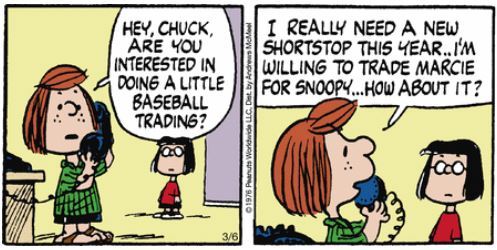
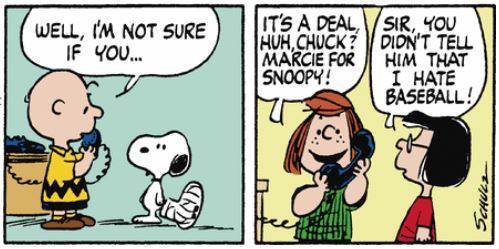


"Joe who?" I hear you saying... per Wikipedia:
Joseph Henry Garagiola Sr. was an American professional baseball catcher. Garagiola played nine seasons in Major League Baseball for the St. Louis Cardinals, Pittsburgh Pirates, Chicago Cubs, and New York Giants.
At the time that these strips were published (1976) he had long since retired from baseball and transitioned into being an announcer and television host. I remember him as one of the hosts of the TODAY show on NBC. Joe passed on March 23, 2016 (aged 90), after a life well lived.
7 notes
·
View notes
Photo

TV Guide - October 12 - 18, 1963
Biagio Anthony Gazzara (August 28, 1930 – February 3, 2012) Actor and director of film, stage, and television. He received numerous accolades, including a Primetime Emmy Award and a Drama Desk Award.
Gazzara became well known in several television series, beginning with Arrest and Trial, which ran from 1963 to 1964 on ABC.
He also appeared in the TV special A Carol for Another Christmas (1964). He also guest-starred on Kraft Suspense Theatre.
He gained fame in the TV series Run for Your Life which ran from 1965 to 1968 on NBC, in which he played a terminally ill man trying to get the most out of the last two years of his life. For his work in the series, Gazzara received two Emmy nominations for "Outstanding Lead Actor in a Drama Series" and three Golden Globe nominations for "Best Performance by an Actor in a Television Series – Drama. (Wikipedia)
Kevin Joseph Aloysius “Chuck” Connors (April 10, 1921 – November 10, 1992) Actor, writer and professional basketball and baseball player. He is one of only 12 athletes in the history of American professional sports to have played both Major League Baseball and in the National Basketball Association.With a 40-year film and television career, he is best known for his five-year role as Lucas McCain in the highly rated ABC series The Rifleman (1958–1963)
As Connors was strongly typecast for playing the single-father rancher, he then starred in several short-lived series, including: ABC's Arrest and Trial (1963–1964), an early forerunner of Law and Order featuring two young actors Ben Gazzara and Don Galloway; and NBC's post-Civil War-era series Branded (1965–1966).
In 1967–1968, Connors starred in the ABC series Cowboy in Africa alongside Tom Nardini and British actor Ronald Howard. (Wikipedia)
7 notes
·
View notes
Text
Collusion - The Hidden Side of Sports
Connor Phipps (48258868)
Discussion: Thursday 8pm
The term "collusion" refers to covert collaboration between two or more people or groups for a wrongous or criminal goal. Business, politics, and sports are just a few of the settings where collusion can happen. Collusion can have detrimental effects on customers, the economy, and society, despite the fact that it is frequently difficult to detect.
Collusion can also happen in sports, for instance when team owners work together to set salary caps or restrict player mobility. This kind of collaboration can be detrimental to both the participants and the spectators who pay to see them compete. In politics, collusion can happen when people or organizations work together covertly to influence elections or gain an unfair advantage.
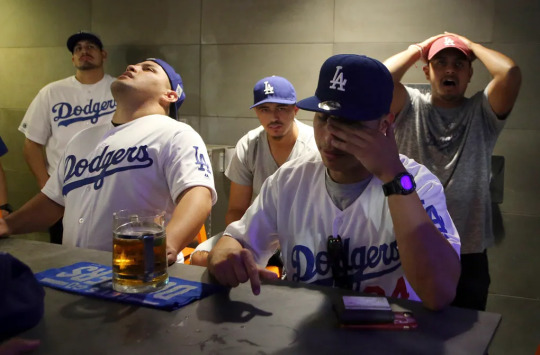
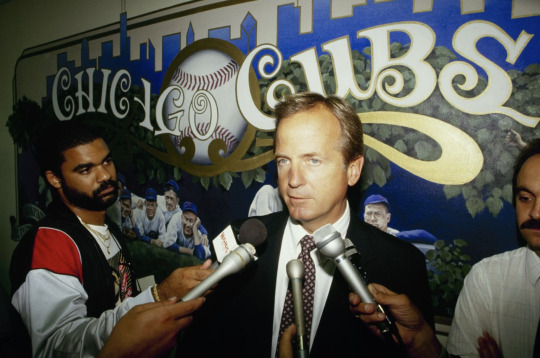
As a frequent viewer of Major League Baseball, I have always admired the sport for its spirit of competition and the sense of fandom it produces. But I've been upset and disillusioned about the league's collusion issue. In addition to harming the players who are not fairly compensated for their skills, this also distorts the playing field and jeopardizes the integrity of the game. As a fan, I like to think that players' skill and effort on the field, not management's plotting behind the scenes, dictate the results of games. My faith in the sport's fairness is destroyed by collusion, and it is tougher for me to love it as much as I once did.
In the late 1990s and early 2000s, Major League Baseball (MLB) saw certain instances of collusion. Several organizations were charged with conspiring to reduce player pay at the time by deciding not to sign lucrative contracts with free agents.
An MLB player made an average of $1.07 million in 1995. It had barely climbed to $2.38 million by 2001. This was in spite of the fact that the league's earnings during that time period went from $1.9 billion in 1995 to $3.5 billion in 2001, a huge rise.

Figure 1: Team Revenues all in the millions

Figure 2: Player Revenues huge difference between team and player revenues

The MLB Players' Union filed a grievance against the league in 1998, alleging collusion amongst team owners. The union charged that teams were working together to avoid competing with one another for free-agent players, which was driving down wages. The dispute was arbitrated, and in 2000, the players were given $280 million in damages when the arbitrator found in favor of the players' union.
This collusion had significant results. Several gifted athletes failed to secure the contracts they merited, and some were forced to retire early or accept pay below what was fair. Teams with smaller payrolls were at a disadvantage relative to those with greater payrolls, which had an effect on the competitive balance of the league.
Overall, this example shows the real-world consequences of collusion in sports, including its impact on player salaries and the overall competitive balance of a league. It also highlights the importance of holding organizations accountable for engaging in collusion and ensuring that players are able to earn fair compensation for their skills and contributions to the sport.
Works cited
“MLB Collusion, Explained.” Google, Google, https://www.google.com/amp/s/www.sbnation.com/platform/amp/mlb/2018/1/18/16882650/mlb-collusion-offseason-free-agency-explainer.
“Baseball Strike in 1994-95 Began 25 Years Ago - MLB | NBC Sports.” Google, Google, https://www.google.com/amp/s/mlb.nbcsports.com/2019/08/12/baseball-strike-in-1994-95-began-25-years-ago/amp/.
Jablon, Robert. “LA Dodger Fans Face Heartbreaking Ending to Magical Year.” The Seattle Times, 1 Nov. 2017, www.seattletimes.com/news/la-baseball-fans-prepare-for-a-once-in-a-lifetime-moment.
Gaines, Cork. “CHART: MLB Salaries Had Largest Increase in 7 Years and This Is Just the Start.” Business Insider, 19 Dec. 2013, www.businessinsider.com/chart-mlb-salaries-had-largest-increase-in-7-years-and-this-is-just-the-start-2013-12.
---. “MLB Team Revenues Show the True Disparity Between the Haves and Have Nots.” Business Insider, 28 Mar. 2013, www.businessinsider.com/team-revenues-show-the-true-disparity-in-major-league-baseball-sports-chart-of-the-day-2013-3.
"Baseball Collusion: It's a Case of Suing the Bosses," by John Feinstein, The Washington Post, published on November 1, 1987.
"Collusion Case Splits Baseball Owners and Players," by Ross Newhan, The Los Angeles Times, published on January 14, 1990.
"Collusion Was the Dark Secret Behind Baseball's Free-Agent Chill," by Murray Chass, The New York Times, published on October 28, 1990.
Baseball Collusion: It's a Case of Suing the Bosses," by John Feinstein, The Washington Post, published on November 1, 1987.
3 notes
·
View notes
Photo








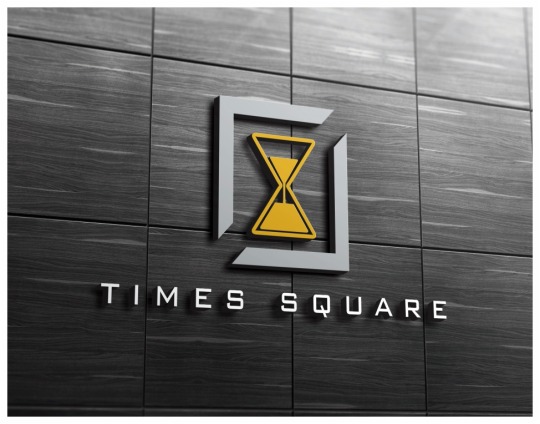

➜➜Elevate your Brand Identity with Our Custom Logo Design!
➜Perfection doesn’t come easy but we make sure that we bring out the best in your logo and we bring perfection to the plate every single time. Our designers ensure that your brand identity shines through in your logo and it is a perfect emblem to represent your business. Whether you are a new brand looking to establish its market or an existing one, we ensure that your uniqueness and individuality is celebrated in your business logo. We know the significance of having a custom logo design as we know it is the single most important entity that serves as a foundation for a powerful brand. We have created thousands of brands across the world for businesses spanning hundreds of business sectors.
➜➜9 Types of Logos and How to Use Them Effectively
1.Wordmarks/logotypes
Examples: Wix, Coca-Cola, Subway, Casper, Kellogg’s, eBay and West Elm.
2.Letterforms
Examples: Facebook, McDonald’s, Netflix and Pinterest, Uber and Beats.
3.Lettermarks/monogram logos
Examples: HBO, IBM, NASA, CNN, HP and Louis Vuitton.
4.Logo symbols/brand marks/pictorial marks
Examples: Shell, Apple, Twitter, Target, Instagram and Snapchat and Major League Baseball.
5.Abstract logo marks
Examples: Airbnb, Chanel, Nike, Olympics, Google Drive, Adidas and Pepsi.
6.Mascots
Examples: Michelin Man by Michelin, Colonel Sanders by KFC, Cap’n Crunch, Tony the Tiger by Kellogg’s and Mr. Peanut by Planters.
7.Emblems
Examples: Starbucks, Stella Artois, Harley-Davidson, NFL, Warner Brothers, Manchester United.
8.Combination marks
Examples: Taco Bell, Toblerone, Dropbox, CVS, Dove and NBC.
9.Dynamic Marks
Examples: MTV, Hilary Clinton, Google, Nickelodeon and Virgin
.
.
➜Web ☑ https://tripolystudio.com/
➜Get in touch +91 9898869160
☑ GET A QUOTE? Mail : [email protected]
#logodesign#logotypedesign#logodesigners#logodesigning#customlogodesign#logosdesign#designerlogo#logoredesign#logobrandingdesign#logotypesdesign#logoidentitydesign#logographicdesign#logomarkdesign
2 notes
·
View notes
Text
The Evolution of Major League Broadcasts: From Radio Waves to Digital Streams
Major League Baseball (MLB) broadcasts have undergone a significant evolution over the decades, from the early days of radio broadcasts to today's digital streaming platforms. This article explores the journey of MLB broadcasts, examining the technological advancements, the impact on fan engagement, and the future trends shaping the industry.
Early Days: The Birth of Radio Broadcasts
In the early 1920s, Major League Baseball teams began experimenting with radio broadcasts, marking a transformative moment in sports media. Radio brought the game into the homes of millions, allowing fans to follow their favorite teams and players in real time. The broadcasts were characterized by descriptive play-by-play commentary, capturing the imagination of listeners across the country.
The Golden Age of Radio Broadcasts
By the 1930s and 1940s, radio broadcasts reached their peak popularity, known as the Golden Age of Radio. Iconic announcers like Red Barber and Mel Allen became household names, their voices synonymous with the game itself. The broadcasts not only provided entertainment but also fostered a sense of community among fans, creating a shared experience around the sport.
Television: A New Era of Visual Broadcasting
The advent of television in the mid-20th century revolutionized MLB broadcasts once again. Fans could now see the action unfold on their screens, enhancing the viewing experience with visual cues and replays. Major League Baseball quickly embraced this new medium, and televised games became a staple in American homes.
The Rise of National Broadcasts
As television technology advanced, so did the reach of MLB broadcasts. National networks like NBC and CBS began airing games, further broadening the sport's audience. The 1970s and 1980s saw the emergence of prime-time baseball broadcasts, with games scheduled for maximum viewership.
Cable Television and Regional Sports Networks
The 1980s brought another shift with the rise of cable television and regional sports networks (RSNs). These networks allowed fans to watch their local teams on a regular basis, catering to regional preferences and creating dedicated fan bases. Teams began to negotiate broadcasting rights, leading to the lucrative deals that characterize today's sports media landscape 메이저리그중계.
The Digital Revolution: From Web Streams to Mobile Apps
The turn of the 21st century ushered in the digital age of MLB broadcasts. Web streaming services began offering live games online, providing fans with new ways to access their favorite teams. Major League Baseball Advanced Media (MLBAM) played a crucial role in this transformation, launching MLB.tv and paving the way for digital subscriptions.
Mobile Apps and On-Demand Content
With the rise of smartphones and tablets, MLB broadcasts became even more accessible through mobile apps. Fans could now watch games on the go, with features like live scoring updates and in-game highlights enhancing the viewing experience. The MLB At Bat app became a must-have for fans, offering a comprehensive platform for following the season.
Virtual Reality and Augmented Reality Experiences
Looking ahead, virtual reality (VR) and augmented reality (AR) are poised to revolutionize MLB broadcasts once again. VR headsets offer an immersive way to watch games, placing fans in the middle of the action. Meanwhile, AR technology could provide real-time stats and player information overlaid onto the live broadcast, enhancing the viewing experience.
The Impact on Fan Engagement
Throughout its history, MLB broadcasts have had a profound impact on fan engagement. Radio broadcasts created a bond between fans and announcers, while television brought the game into living rooms across the country. Digital platforms have made it easier than ever for fans to follow their teams, regardless of location, fostering a global community of baseball enthusiasts.
Challenges and Opportunities
Despite the advancements, MLB broadcasts face challenges, such as navigating broadcast rights, blackout restrictions, and the balance between traditional and digital platforms. However, these challenges also present opportunities for innovation and growth, with new technologies and viewing experiences on the horizon.
The Future of MLB Broadcasts
Looking forward, the future of MLB broadcasts promises to be even more interactive and immersive. As technology continues to evolve, fans can expect personalized viewing experiences, expanded content offerings, and new ways to connect with the game they love. Whether through VR headsets, mobile apps, or innovative broadcasting techniques, the next era of MLB broadcasts is sure to be exciting.
Conclusion
Major League Baseball broadcasts have come a long way since the early days of radio. From radio waves to digital streams, each era has brought new advancements, transforming how fans experience the game. As technology continues to evolve, so too will the ways fans connect with their favorite teams. The future of MLB broadcasts is bright, with endless possibilities for innovation and growth in the world of sports media.
0 notes
Text
The Evolution of Major League Broadcasting: From Radio Waves to Digital Age Glory

In the world of sports, broadcasting has always played a pivotal role in connecting fans with their favorite teams and athletes. Nowhere is this more evident than in Major League Baseball (MLB), where the evolution of broadcasting has mirrored technological advancements and changing fan preferences. From the crackling radio waves of yesteryear to the high-definition streams of today, MLB broadcasting has transformed significantly over the decades. This article explores this evolution, highlighting key technological milestones, broadcasting legends, and the future of baseball broadcasting in the digital age 메이저리그중계.
The Early Days: Radio and the Golden Age of Baseball
Baseball and radio have been inseparable since the early 20th century. In the 1920s, the first baseball games were broadcast on radio, allowing fans to follow the action from their living rooms. These broadcasts became immensely popular, with legendary broadcasters like Red Barber and Vin Scully becoming household names. Their vivid descriptions painted pictures in the minds of listeners, capturing the drama and excitement of the game.
Radio broadcasts became a lifeline for fans during World War II when many could not attend games in person. It was during this era that the phrase "the crack of the bat, the roar of the crowd" entered the lexicon, as radio brought the ballpark atmosphere into homes across America.
Television and the Rise of Visual Broadcasting
The advent of television in the 1950s changed the landscape of baseball broadcasting forever. Suddenly, fans could see the players in action, watch the flight of the ball, and witness the emotion on the field. The first televised MLB game was on August 26, 1939, and television quickly became the dominant medium for sports broadcasting.
In the 1960s and 1970s, networks like NBC and ABC began broadcasting games nationally, further increasing the popularity of the sport. The 1975 World Series between the Boston Red Sox and Cincinnati Reds, famously known for Carlton Fisk's game-winning home run in Game 6, drew millions of viewers and cemented baseball's place in the television landscape.
Cable and Satellite: The Expansion of Viewing Options
The 1980s brought about the rise of cable and satellite television, which allowed for even more baseball coverage. Regional sports networks like YES Network and NESN began broadcasting games of local teams, catering to fans who couldn't attend games in person. This era also saw the birth of 24-hour sports networks like ESPN, which featured highlights, analysis, and live broadcasts of games from across the league.
The availability of cable and satellite TV made it easier for fans to follow their favorite teams and players, regardless of where they lived. This era also marked the beginning of contract disputes between networks and cable providers, as the demand for sports programming continued to grow.
The Internet and Streaming: Baseball in the Digital Age
The 21st century has brought about a revolution in how fans consume baseball content. The internet and streaming services have made it possible for fans to watch games on their computers, tablets, and smartphones. MLB.tv, launched in 2002, allows fans to stream games live or on-demand, giving them unprecedented access to their favorite teams.
Social media platforms like Twitter and Facebook have also become important tools for MLB broadcasting, allowing fans to interact with each other and share highlights in real-time. Major League Baseball has embraced these platforms, posting highlights and behind-the-scenes content to engage fans and attract new viewers.
The Future of MLB Broadcasting: Virtual Reality and Beyond
As technology continues to evolve, so too will baseball broadcasting. Virtual reality (VR) and augmented reality (AR) have the potential to transform the fan experience, allowing viewers to feel like they're sitting in the ballpark from the comfort of their own homes. MLB has already experimented with VR broadcasts, and it's only a matter of time before this technology becomes more widely available.
Artificial intelligence (AI) and machine learning are also expected to play a role in the future of MLB broadcasting. These technologies can be used to personalize the viewing experience, providing fans with customized highlights and analysis based on their preferences.
Broadcasting Legends: The Voices of Baseball
Throughout the history of MLB broadcasting, there have been many legendary voices that have brought the game to life for millions of fans. Vin Scully, known for his poetic style and encyclopedic knowledge of the game, called Dodgers games for 67 years before retiring in 2016. Harry Caray, with his trademark enthusiasm and love for the game, became a beloved figure during his time with the Chicago Cubs and later the St. Louis Cardinals.
Today, broadcasters like Joe Buck and Bob Costas continue to carry on the tradition of excellence in baseball broadcasting, bringing their own unique styles and perspectives to the game.
Challenges and Opportunities in Modern Broadcasting
While the digital age has brought about many opportunities for MLB broadcasting, it has also presented its fair share of challenges. Piracy and illegal streaming continue to be a concern for rights holders, as fans look for ways to watch games without paying for access. MLB and its broadcasting partners are working to combat these issues, but it remains a constant battle.
At the same time, the global reach of the internet has opened up new markets for baseball, allowing the sport to attract fans from around the world. MLB has made efforts to expand its international presence, with games being played in countries like Japan and Mexico.
Conclusion: The Enduring Appeal of MLB Broadcasting
The history of MLB broadcasting is a story of innovation, from the early days of radio to the digital age of streaming. The evolution of technology has transformed the way fans experience the game, bringing them closer to the action than ever before. As we look to the future, one thing is certain: baseball broadcasting will continue to evolve, providing fans with new and exciting ways to connect with their favorite teams and players.
0 notes
Text
The Evolution of MLB Broadcasts: From Radio to Digital Dominance
The Major League Baseball (MLB) broadcast experience has undergone a remarkable transformation over the decades. From its humble beginnings on radio to today's immersive digital broadcasts, the evolution of MLB broadcasts reflects both technological advancements and changing viewer preferences. This article explores the journey of MLB broadcasts, from their inception to the present day, highlighting key milestones, innovations, and the future of how fans experience America's pastime.
The Early Days: Radio Pioneers
Radio's Role in Popularizing Baseball
In the early 20th century, radio emerged as a powerful medium for sports broadcasting. The first MLB game broadcast aired on KDKA in Pittsburgh in 1921, marking the beginning of a new era in sports communication. Radio broadcasts brought the excitement of live baseball games to fans across the country, transforming the way people experienced the sport. Families gathered around their radios, listening intently to announcers' descriptions of games as if they were at the ballpark themselves mlb중계.
Legendary Voices
Broadcasters like Red Barber, Mel Allen, and Vin Scully became household names, with their distinctive voices and colorful commentary adding depth and drama to the game. Their storytelling abilities helped cultivate the love of baseball among fans who couldn't attend games in person.
Television Era: Bringing the Game Home
The Rise of Television
In the late 1940s and early 1950s, television began to revolutionize the way people consumed sports. The first televised MLB game, between the Cincinnati Reds and Brooklyn Dodgers in 1939, laid the foundation for what would become a cultural phenomenon. Television broadcasts provided fans with a visual connection to the game, capturing the excitement and athleticism of MLB players in a way that radio could not.
Game Changers: Technological Advancements
Advancements in television technology, such as instant replay and high-definition broadcasts, further enhanced the viewing experience. Networks like NBC and CBS competed for broadcast rights, bringing the World Series and All-Star Game into living rooms across America. The advent of color television in the 1960s added a new dimension to the broadcasts, making the game more vibrant and engaging for viewers.
The Cable Television Boom: A New Era of Access
Expansion of Cable Networks
The 1980s saw the rise of cable television, which provided MLB with a platform to reach a broader audience. Networks like ESPN and TBS began broadcasting regular season games, allowing fans to follow their favorite teams throughout the season. Regional sports networks (RSNs) also emerged, offering comprehensive coverage of local teams and their minor league affiliates.
Interactive Features
Cable networks introduced interactive features such as on-screen statistics and player profiles, enhancing viewers' understanding of the game. This era also saw the introduction of dedicated sports channels, like MLB Network, which provided 24-hour coverage of baseball news, highlights, and analysis.
Digital Revolution: The Internet Age
Streaming Services and Mobile Apps
The 21st century brought about a digital revolution in MLB broadcasting. Streaming services like MLB.tv allowed fans to watch live games on their computers, tablets, and smartphones, regardless of their location. This shift towards digital platforms gave fans unprecedented access to games, with options for live streaming, on-demand replays, and interactive features.
Social Media Integration
MLB teams and broadcasters embraced social media platforms like Twitter, Facebook, and Instagram to engage with fans in real-time. Social media provided a new avenue for teams to share behind-the-scenes content, highlight key plays, and interact with fans during games.
Virtual Reality and Augmented Reality: The Future of MLB Broadcasts
Immersive Viewing Experiences
Looking ahead, virtual reality (VR) and augmented reality (AR) technologies promise to revolutionize MLB broadcasts once again. VR headsets offer fans the opportunity to watch games from unique perspectives, such as behind home plate or in the dugout. AR overlays could provide viewers with real-time statistics, player information, and interactive elements directly on their screens.
Personalized Content
Advancements in artificial intelligence (AI) and machine learning may enable broadcasters to deliver personalized content to viewers based on their preferences and viewing habits. This could include customized highlight reels, player interviews, and statistical analyses tailored to individual fans.
Conclusion
The evolution of MLB broadcasts from radio to digital platforms has transformed the way fans experience America's pastime. Each era of broadcasting—radio, television, cable, and digital—has brought new technologies and innovations that have enhanced the viewing experience and connected fans to the game in unique ways. Looking forward, advancements in VR, AR, and AI promise to continue this trend, offering fans more immersive, interactive, and personalized ways to enjoy MLB broadcasts. As technology continues to evolve, one thing remains certain: the magic of baseball will continue to captivate audiences around the world for generations to come.
1 note
·
View note
Text
The Global Guide to Exploring Overseas Baseball Broadcast

Fans around the world are eager to watch their favourite teams and leagues even when they're far away. The overseas baseball broadcast is a vital element to fans who wish to remain connected with the action. This guide explores the different aspects of soccer broadcasting overseas, giving fans tips and insights on how they can catch the most exciting moments.
Key Broadcasters and Streaming Services
The landscape for overseas soccer broadcasting is dominated by a few major broadcasters. ESPN, Sky Sports and beIN Sports provide extensive coverage for top leagues, such as English Premier League (EPL), La Liga, Serie A and Bundesliga. Streaming platforms such as DAZN and Amazon Prime Video have also secured the broadcast rights for various competitions. This makes it easy for fans to view matches on demand or live. Knowing what these streaming services offer can help you choose the right service for your viewing preference.
Navigating Different Time Zones
The time zone differences can be a challenge for soccer fans from around the world. A Premier League match played in Britain might be broadcast in Asia late at night or early the next morning. Fans can manage their schedules using tools like Live Soccer TV and FlashScore which show match times in the local time zone. Set reminders or alarms to ensure that you don't forget any important moments.
Viewing options that are legal and secure
It's crucial that soccer fans choose safe and legal options for watching matches online. Subscription packages are available from many streaming networks that allow access to exclusive content, live matches and replays. NBC Sports Gold, for example, covers the Premier League across the US while Optus Sport provides extensive coverage of the Australian league. Subscribers to these services are not only supporting the sport, but they also guarantee a reliable and high-quality viewing experience free of the dangers associated with illegal streams.
How to bypass geo-restrictions using VPNs
Due to broadcasting rights in certain regions, geo-restrictions may prevent soccer fans from watching some broadcasts. Virtual Private Networks (VPNs) are a common way to circumvent these restrictions. VPNs mask the IP addresses of users, making it appear that they're accessing the Internet from another location. It is especially useful for football fans who want to use UK services such as BBC iPlayer and ITV Hub in order to stream matches. To ensure smooth and secure streaming, it's important to select a VPN that is reputable 해외야구중계.
Enhancing your overseas baseball broadcast viewing experience
Watching matches on Overseas Baseball broadcasts can be enhanced to make them more exciting. Many streaming and broadcasting services provide features such as multiple camera angles and different language commentary. They also offer in-depth analysis of matches. Twitter, Facebook and Instagram are social media platforms that provide live updates, interactive discussion, and allow fans to interact with soccer communities around the world. Virtual Reality (VR), for example, is a technology that offers immersive viewing, which brings fans even closer to the game than before.
The Future of Overseas Baseball Broadcast
With the constant advancements of technology, the future looks bright for overseas soccer broadcasting. Augmented Reality and Artificial Intelligence are set to provide personalized, interactive experiences. The rollout of the 5G will improve streaming quality, reduce latency and enable smoother mobile broadcasts. Soccer fans can expect to see more and better streaming and broadcasting services as the industry continues to develop.
Conclusion
The overseas baseball broadcast allows fans to follow their teams and leagues regardless of geographic barriers. Fans can have a high-quality viewing experience by understanding broadcasters, streaming services, time zones and legal options. The future of soccer broadcasting will bring fans even more immersive and innovative ways to enjoy the excitement of the game. The global reach of broadcasts for soccer ensures the game is accessible to everyone, whether you are watching in your living room or while on the move.
0 notes
Text
NBC Sports: MLB 1988-GOW-7/23-San Francisco Giants @ St. Louis Cardinals: Full Game
Source:The Daily Press
What a difference a year or a season makes for both the Giants and Cardinals. Who were both clearly the two best teams in the National League in 1987 and in the Cardinals case in 1988 were fighting to stay out of last place in the NL East in 1988. A division they played in until MLB realigned in 1994 and went to three divisions in both leagues. And in the Giants case, never…
View On WordPress
#1988#1988 MLB Season#1988 San Francisco Giants#1988 St. Louis Cardinals#America#Busch Memorial Stadium#Joe Garagiola#Major League Baseball#Missouri#MLB#National Baseball League#National League#NBC Sports#NBC&039;s MLB Game of The Week#NL Central#NL West#San Francisco Giants#St. Louis#St. Louis Cardinals#The 1980s#United States#Vin Scully
0 notes
Text
Top Streaming Service Stocks: Choosing the Right Picks for Your Portfolio

Over the last decade, how people watch TV shows, movies, and videos has transformed significantly. Streaming services like Netflix and YouTube have become the go-to choices for many, surpassing traditional media. This change opens up investment opportunities for those who can pinpoint which streaming platforms can draw in viewers and make money.
Top of Form
Top streaming stocks
1. Netflix (NFLX)
2. Alphabet (GOOG and GOOGL)
3. Amazon (AMZN)
4. Disney (DIS)
5. Apple (AAPL)
6. Comcast (CMCSA)
7. Warner Bros. Discovery (WBD)
8. Paramount Global (PARA)
1. Netflix (NFLX)
Netflix has become a big name in streaming, changing how we watch shows and movies. With around 270 million subscribers worldwide, it's one of the few streaming services that makes a lot of money. Experts like Morningstar analyst Matthew Dolgin say Netflix is the best in global streaming and will likely stay that way for years.
Netflix's success comes from its huge audience and the many shows and movies it offers. They keep growing and making new stuff, which keeps people interested. So, if you're thinking about investing, Netflix might be a good bet because it's expected to keep leading the streaming world for a long time.
2. Alphabet (GOOG and GOOGL)
You might not think of Google's parent company Alphabet as a big player in streaming, but YouTube, which they own, is huge. People around the world watch over 1 billion hours of YouTube on their TVs every day. They also have a service called YouTubeTV, kind of like regular cable but streamed online, and it has over 8 million subscribers.
3. Amazon (AMZN)
Amazon, known for its online shopping, also has a streaming service called Amazon Prime Video. It's become a big deal, especially for people who subscribe to Amazon Prime. The CEO, Andy Jassy, told shareholders that they believe Prime Video can be a big and profitable business by itself.
Lately, Amazon has been adding ads to Prime Video, which has more than 200 million viewers each month. They've also started showing live sports like Thursday Night Football NFL games. This shows that Amazon is serious about growing its streaming business and making it even more attractive for Prime subscribers.
4. Disney (DIS)
Disney is changing the way it does business by focusing more on streaming. Their main service, Disney+, now has about 118 million subscribers who pay around $7 to $8 per month. Disney also owns other popular channels like ESPN for sports, ABC for news and shows, and the Disney channel for kids' entertainment.
Even though Disney has these great assets, it's facing some challenges as the industry shifts. Morningstar's Dolgin says that while Disney has advantages, the new way of doing things might not be as profitable as before. Still, Disney is adapting and finding ways to stay strong in the ever-changing media world.
5. Apple (AAPL)
While Apple is famous for creating iPhones, iPads, and Mac computers, it's also made a big streaming service called Apple TV+. They don't share a lot of details about it, but it's believed that around 25 million people pay for it, and more might get it through special deals.
Popular shows like Ted Lasso have attracted viewers to Apple TV+, and they've even started showing live sports like Major League Baseball and Major League Soccer. So, even though Apple is mainly known for its devices, it's also making a name for itself in the streaming world.
6. Comcast (CMCSA)
Comcast, a well-known media company, is shifting towards streaming with its service called Peacock. It owns big brands like NBC, Telemundo, Universal, and Sky. By the end of 2023, Peacock had around 31 million people paying for it, but it also faced a loss of about $2.7 billion.
To attract more subscribers, Comcast is focusing on adding live sports to Peacock. They've already streamed an NFL playoff game in early 2024, and they also show college basketball and football games. This move shows that Comcast is serious about competing in the streaming world by offering popular sports content.
7. Warner Bros. Discovery (WBD)
Warner Bros. Discovery is a big company that owns a bunch of popular media brands like HBO, CNN, Discovery Channel, HGTV, and more. They also have famous franchises like Harry Potter, Game of Thrones, and The Lord of the Rings.
At the end of 2023, Warner Bros. Discovery said they had nearly 98 million subscribers for their various services, which include HBO Max, legacy HBO, and Discovery+. This company came together in 2022 when Discovery merged with AT&T's media business, showing that they're a major player in the entertainment industry.
8. Paramount Global (PARA)
Paramount Global owns lots of popular media channels like CBS, Nickelodeon, MTV, and Comedy Central. Their streaming service, Paramount+, had over 71 million subscribers by March 2024.
Right now, Paramount is thinking about merging with another company, but it's not certain if it will happen. They've been talking with Skydance Media, and they also got an offer from Sony and a private equity firm called Apollo, who want to buy Paramount with cash. These talks show that Paramount is exploring options to grow and strengthen its business.
Netflix started offering streaming services in 2007 and has become the biggest player in the industry. They have around 270 million subscribers worldwide as of March 2024 and made a profit of $5.4 billion in 2023.
Seeing Netflix's success, other companies jumped into streaming, but most haven't done as well. Big names like Disney and Comcast tried with services like Disney+, but they mostly lost money. Tech giants like Apple and Amazon also joined in, with varying levels of success.
Recently, Disney said Disney+ gained over 6 million new subscribers, and its losses in streaming got smaller. But the stock still dropped about 10% because they don't expect more growth this quarter and costs will hurt profits. Paramount Global, struggling to make money from streaming, is considering takeover offers. Sony and a private equity firm called Apollo offered $26 billion in cash in early May.
0 notes
Link
#Advanced #MLB #Report #Baseball Report: MLB, Roku in Superior Talks to Take Over Stream for Peacock's Sunday Baseball https://news247planet.com/?p=842733
0 notes
Text
Happy Birthday 🎂 🥳 🎉 🎈 🎁 🎊 To You
The Cute Little Blonde Haired American Child Star Actress 👩🏼 Of The 90's & Early 2000's Of The Biggest Movies 🎥 In Her Acting Career/ Now All Grown Up
Born On February 23rd, 1994
Fanning was born in Conyers, Georgia. She attended a Montessori School in Covington. Her mother, Heather Joy (née Arrington), played tennis professionally, and her father, Steven J. Fanning, played minor league baseball and later worked as an electronics salesman in Los Angeles, California. Fanning is the elder sister of actress Elle Fanning When Fanning was a small child, she was an actress at the Towne Lake Arts Center in Woodstock, Georgia, starring in small plays. In 1999, at the age of five, she began her professional acting career, appearing in a Tide television commercial. Her first significant acting job was a guest role in the NBC prime-time drama ER, which remains one of her favorite roles.
She is an American actress. She rose to prominence at the age of seven for her performance as Lucy Dawson in the drama film I Am Sam (2001), for which she received a Screen Actors Guild Award nomination at the age of eight, making her the youngest nominee in SAG history. Fanning played major roles as a child actress in the films Uptown Girls (2003), The Cat in the Hat (2003), Man on Fire (2004), War of the Worlds (2005), Dreamer (2005), Hide and Seek (2005), Charlotte's Web (2006), Push (2009), and the title character in Coraline (2009).
Fanning also played more mature roles, including Lewellen in Hounddog (2007), Lily in The Secret Life of Bees (2008), Cherie Currie in The Runaways (2010) and Jane in The Twilight Saga (2009–2012). Throughout the 2010s, she continued appearing in independent productions such as the dramas Now Is Good (2012) and Night Moves (2013), the comedy-drama Very Good Girls (2013), and the biographical film Effie Gray (2014). In 2018, she appeared in the heist comedy Ocean's 8 and had a starring role in the period drama series The Alienist. She has since portrayed Manson girl Squeaky Fromme in the Quentin Tarantino film Once Upon a Time in Hollywood (2019), Susan Ford in the drama series The First Lady (2022), and CIA agent Emma Collins in The Equalizer 3 (2023).
Please Wish This Little Radiant & Marvelous Blonde Haired 👩🏼Child Star Actress Of The 90's & Early 2000's/ Now All Grown Up. A Very Happy Birthday 🎂 🥳 🎉 🎈 🎁 🎊
YOU'VE KNOWN HER SINCE CHILDHOOD STARDOM
YOU SEEN HER GROWN UP INTO A BEAUTIFUL & REMARKABLE YOUNG WOMAN
& WE STILL LOVE HER 💘 ALL THE SAME
THE 1 & THE ONLY
MS. HANNAH DAKOTA FANNING 👩🏼❤
HAPPY 30TH BIRTHDAY 🎂 🥳 🎉 🎈 🎁 🎊 TO YOU MS FANNING 👩🏼& HERE'S TO MANY MORE YEARS TO COME






#DakotaFanning
1 note
·
View note
Text

Networks unite to create new sports streaming platform

Miami
ESPN, Fox and Warner Bros Discovery have reached agreement on a new streaming platform for live sports content, the companies said on Tuesday.
The platform would combine the sports offerings of the three networks in one product offering content from the USA's top leagues and is planned to be launched in autumn of this year.
The networks said in a statement that they had "reached an understanding on principal terms to form a new Joint Venture (JV) to build an innovative new platform to house a compelling streaming sports service".

The companies said that the formation of the package is subject to them reaching "definitive agreements".
The product is targeted at "cord-cutters" who prefer to subscribe to streaming services rather than traditional cable tv packages.
"The platform would aggregate content to offer fans an extensive, dynamic lineup of sports content, aiming to provide a new and differentiated experience to serve sports fans, particularly those outside of the traditional pay TV bundle," the statement said.

Consumers would be able to bundle the product with existing broader streaming offerings from Disney+, Hulu and Max.
The new platform would provide access to ESPN's existing streaming platform ESPN+ as well as the main channels from ESPN, Fox and Warner Bros.
It would include games from the NFL, NBA and Major League Baseball, NASCAR, UFC, college sports, PGA Tour golf and international soccer, including the 2026 World Cup, which will be broadcast on Fox.

"The launch of this new streaming sports service is a significant moment for Disney and ESPN, a major win for sports fans, and an important step forward for the media business," said Bob Iger, CEO of The Walt Disney Company said.
"This means the full suite of ESPN channels will be available to consumers alongside the sports programming of other industry leaders as part of a differentiated sports-centric service," he added.
While the new platform would offer plenty of sport for fans, it would not however be able to bring all the top games under one package.

The NFL dominates ratings in the USA and not all the games in the league would be included in the proposed new product.
CBS, NBC and Amazon Prime Video also own rights to nationally broadcast NFL games and Google's YouTube TV has the rights for the NFL's Sunday Ticket service which offers access to all "out of market" games.
NBC offers streaming of sports through its Peacock service while CBS streams content on Paramount Plus.

The three networks are confident though that their package will appeal to sports fans who increasingly have to navigate a range of apps and subscriptions to follow their favorite sports.
"We’re pumped to bring the FOX Sports portfolio to this new and exciting platform. We believe the service will provide passionate fans outside of the traditional bundle an array of amazing sports content all in one place," said Lachlan Murdoch, Executive Chair and CEO of FOX.
David Zaslav, CEO of Warner Bros. Discovery, said the new service would provide an "unparalleled combination of marquee sports rights and access to the greatest sporting events in the world".

"This new sports service exemplifies our ability as an industry to drive innovation and provide consumers with more choice, enjoyment and value and we’re thrilled to deliver it to sports fans," he said.
The statement did not give any indication of the cost of subscription to the service.
0 notes